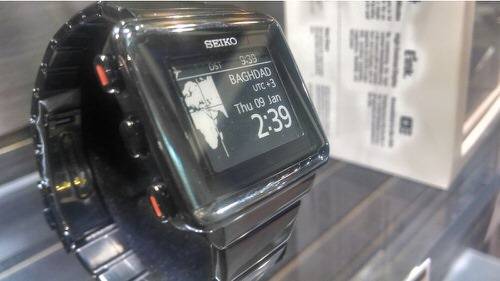Think your smartphone is smart? You ain’t seen nuthin’ yet. The technology that powers mobile is in the process of spreading, well, everywhere—and the world around us is going to be radically transformed as a result.
Think of it as the next big phase in the evolution of mobile computing. Cars, televisions, factories, clothes and other wearable items … you name it, and the innovations that were developed for smartphones are going to help define the new things they’ll do and how you’ll use them.
The first phase of mobile was about turning our cellphones into what are essentially powerful pocket PCs. This posed unique challenges because of the size of the device and data connectivity issues. Over the past seven years (dating from the launch of the first iPhone), engineers worked to make everything smaller and faster while software developers created apps and systems to turn a cellphone into an “everything” device. The second phase will be to take that concept of everything and spread it everywhere. The connected home, the smart car, the television and commerce are all being informed by the advances that have been made in mobile.
“We are in the middle of the inflection point from developing the technology to deploying it,” said Ericsson CEOHans Vestberg when describing what he called the second phase of mobile at the Consumer Electronics Show in Las Vegas this week.
We’re not talking about mundane advances in single areas like improved operating systems or apps. The proliferation is more ubiquitous than that. The next phase of mobile will result from continuing rapid advances in just about every technology that makes it possible for that device in your hand to query huge remote databases and perform complex calculations—all so you can figure out the fastest way home from work or play a round of Angry Birds.
The spread and evolution of mobile technology includes the cellular base stations that serve as the nodes in an ever denser web of wireless data; the processors and communication components do the heavy lifting; the sensors that feed in data from your environment; and the software that makes sense of it all. All of these technologies are getting smarter, faster, smaller, less power-intensive and more numerous—which is a big part of why they’re rapidly spreading beyond smartphones and tablets into the world at large.
Making Everything Smart
“We want to make everything smart,” Brian Krzanich said during his Monday keynote at the CES.
He wasn’t kidding. Just about every physical object the Intel CEO described during his presentation was an augmented version of itself, from “smart” ear buds and watches to coffee cups that ask to be refilled and onesies that signal parents when it’s time to change the baby.

Of course, these items aren’t going to make themselves smart. But the hard part may already be over, since industry has already done the hard work of taking the sophisticated computing and communication hardware that used to reside in beige boxes with noisy fans and cramming it into flat slabs of metal and glass that fit in our pockets.
“We are designing for one of the hardest devices” to get right,” Qualcomm VP Tim McDonough said of the smartphone. “The challenges of the smartphone translate really well” to devices that can be used in a variety of other ways, he added. “If you can make this work in a smartphone, you can make it work in everything.”
That’s right. Everything.
This proliferation of technology built for mobile into every aspect of computing is exactly what we’re seeing. New applications, services and devices are standing on the shoulders of hardware and software originally created for smartphones. LG’s new smart televisions run on webOS, an operating system originally created for Palm handhelds. Wearable devices like smartwatches or Google Glass feature components once found solely in smartphones. Cars offer Bluetooth wireless connections and onboard computer.
Soon enough, so will a lot of other things. “The technology is spreading across different devices and we are tailoring the capability to those particular devices,” McDonough said.
The Democratic Effects Of Ubiquitous Innovation
Freeing smartphone capabilities from that oblong slab has been liberating for developers and engineers. Often enough, they can now dream bigger and play with far more real estate than smartphones offered—say, in cars, homes, televisions and larger tablets. We’re only starting to see the first fruits of that experimentation, but it’s clear there’s going to be a lot more.

As this happens, key changes are taking place in the world’s computing and communications infrastructure as well. Driven by exploding demand, cellular networks are growing denser, delivering greater bandwidth and continuing to expand into new areas.
AT&T VP John Donovan noted at a CES keynote panel that the data signal from a smartphone used to travel as much as five miles to the nearest base station; now that signal travels only about two miles. Qualcomm chairman Paul Jacobs envisions a world with a cell station for every person, making data more available than ever before.
On top of that infrastructure lie the platforms that giants of the tech industry are busily building—platforms that make it possible to develop new applications and services without reinventing the wheel. Google, Apple, Amazon, Microsoft, and their ilk are making it cheaper and easier to create than ever before.
“You don’t know necessarily where this next great thing is coming from,” Qualcomm’s Jacobs said at CES. “It takes fewer and fewer people to do something pretty dramatic in this world. You give people the capability and you would be surprised what they come up with.”
And that’s exactly what this profusion of mobile technology and capabilities is poised to enable.









